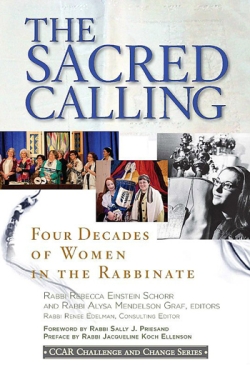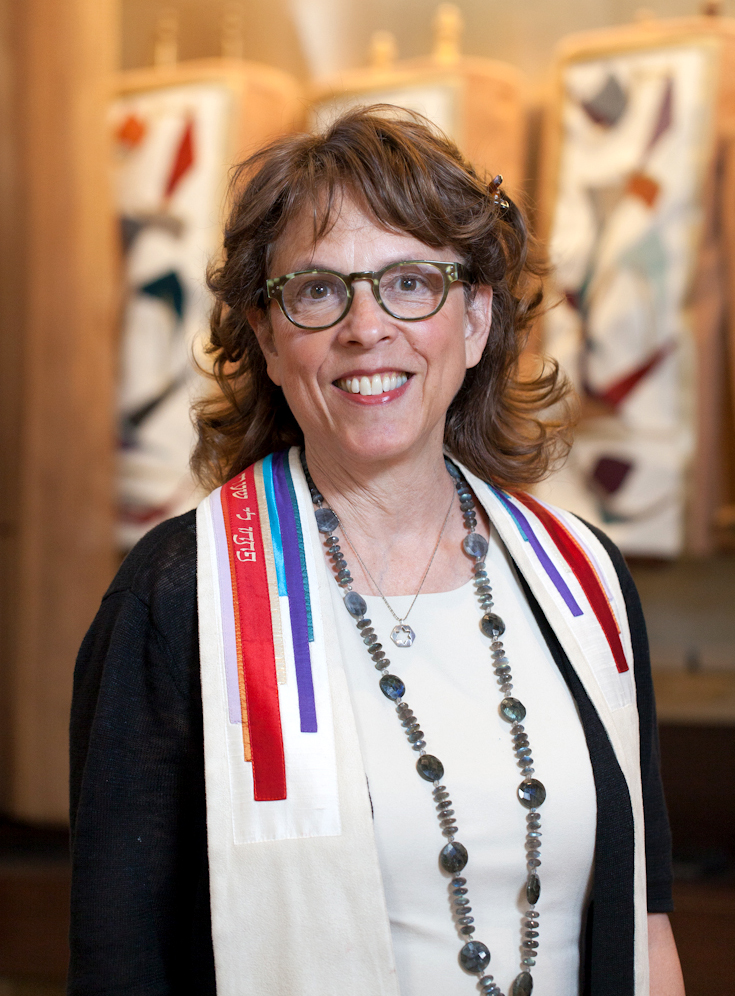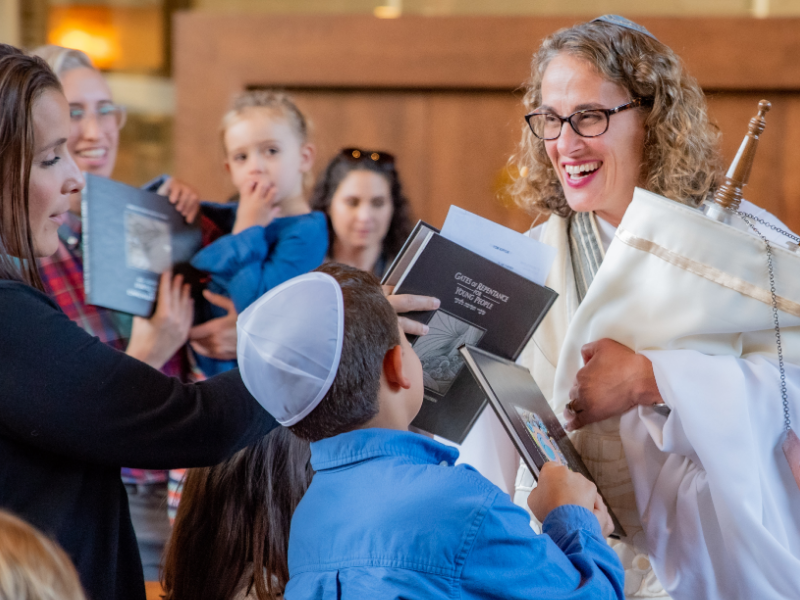At almost 750 pages long, it’s is a very big book, one that contains 66 essays and personal reflections. The length isn’t a surprise, actually, when you realize that the scope of the book spans four decades of women in the rabbinate: 40 years, the amount of time it took our Israelite ancestors to reach the Promised Land.
The surprise is that it is so fascinating.
The Sacred Calling: Four Decades of Women in the Rabbinate powerfully illustrates that women rabbis have not only changed the lives of individuals but of the entire Jewish people.
I’ve been part of this journey for more than 40 years – but like many of my colleagues, when you are doing the work on the ground, marching in the wilderness, you don’t always see the bigger picture. You forget the history, if you ever really knew it, and you take for granted things that, upon reflection, are actually remarkable. This book is a powerful illustration of the importance of the journey.
Part one is best described through the title of Pamela Nadell’s essay, “The Long and Winding Road to Women Rabbis.” It reminds all of us that we stand on the shoulders of those who came before us, some of whose names and stories we know, but many others who go unrecognized.
Part two, about the ordination of women, starts with letters from Hebrew Union College to Sally Priesand, beginning with a response to her inquiry as a teenager in 1963 as to the steps required to become a rabbi. Those early days, even after Rabbi Priesand’s ordination in 1972, were marked by ambivalence about women rabbis on the part of many Reform gedoleh ha-dor, the leaders of Reform Judaism.
For me, this section is very personal. I was part of the Central Conference of American Rabbis’ Task Force on Women in the Rabbinate, which was established in 1976; the creation of the Women’s Rabbinic Network; and the CCAR’s historic 1979 “rump convention,” when the small group of ordained women rabbis brought Betty Friedan to Arizona to speak about the Equal Rights Amendment and the connection between her feminism and her Judaism.
Though we’ve come a very long way since then, we have still not reached the promised land of genuine inclusion.
Other sections of the book describe the ripple effects of the organized Reform Jewish community’s decision to ordain women, including the ways it opened up the conversation for the Conservative and eventually Orthodox communities to do the same.
More central is the focus on the impact of women rabbis on ritual, liturgy, theology, scholarship, and even the structures of Jewish institutions and the notion of leadership. The voices are mostly those of North American women rabbis, but they also include reflections of male colleagues who comment on how the presence of women rabbis has transformed the rabbinate for men. The collection includes several articles by women Reform rabbis in Israel and the important though slow difference their presence is making there. We also hear from Orthodox women who are rabbis in all but title. An essay by Rabbi Mary Zamore points out that until this year, the smicha (ordination) women Reform rabbis received from the Hebrew Union College – Jewish Institute of Religion (the Reform seminary) bore a different Hebrew title than did our male colleagues. That was a revelation to me!
The ongoing problems of lack of full equality are directly addressed in essays that talk about the salary gap between male and female rabbis, the challenges women face when negotiating for adequate parental leaves, and the still-small number of women who are senior rabbis or CEOs of national Jewish organizations. In short, a gender gap remains between the rabbinical career paths of women and men.
Other essays confront the subconscious projection of images of God or parents onto rabbis. If people imagine God as male and, at the same time, see their rabbi as a kind of stand-in for God, they experience a disconnect when faced with a woman rabbi. When people see rabbis as perfect parent surrogates, with a woman rabbi as the “perfect mother,” they often transfer their own issues with their less-than-perfect mother onto their rabbi.
The book also includes articles on the not-very-flattering images of women rabbis in popular culture, including congregants commenting on what the rabbi is wearing and how well she applies makeup.
This is a book for the many Jews who now take gender equality for granted – those who have never used prayer books or studied commentaries in which God is spoken of only in male metaphors – but who want to really understand the journey that revolutionized Jewish life since women have been able to say hineini, “Here I am,” and actualize their sacred calling.
It is, too, for those who recognize that we have not yet reached the promised land of equality and possibility and want to make a difference.
Rabbi Laura Geller is rabbi emerita of Temple Emanuel in Beverly Hills, CA.
Give to the URJ
The Union for Reform Judaism leads the largest and most diverse Jewish movement in North America.


